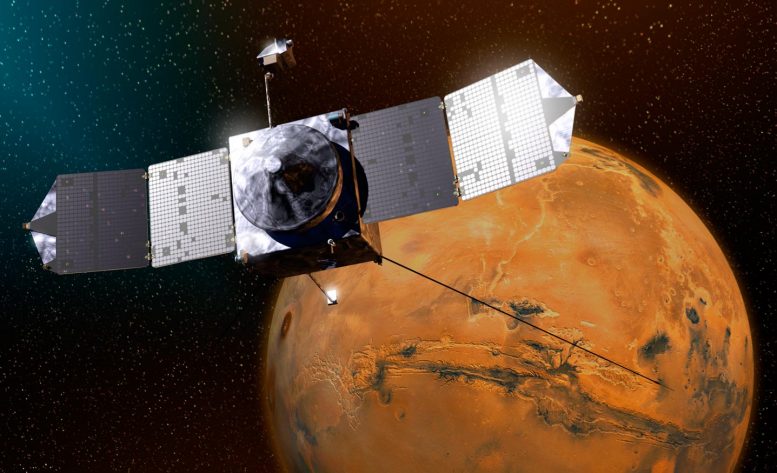
Artist’s rendition of NASA”s Mars Atmosphere and Volatile Evolution, or MAVEN spacecraft orbiting Mars. Credit: NASA/GSFC
Mars had a global magnetic field much earlier—and much later—in the planet’s history than scientists have previously known.
A planet’s global magnetic field arises from what scientists call a dynamo: a flow of molten metal within the planet’s core that produces an electrical current. On Earth, the dynamo is what makes compass needles point north. But Mars’ dynamo has been extinct for billions of years.
New findings from UBC researchers working with colleagues in the U.S. and France, published May 1, 2020, in Science Advances, bring us closer to knowing the precise timing and duration of Mars’ dynamo.
“We find that the Martian dynamo operated at 4.5 billion and 3.7 billion years ago. Dynamo timing is a big part of a planet’s evolution, and what we find is very different from what we have thought so far,” said Anna Mittelholz, postdoctoral fellow in UBC’s Department of Earth, Ocean and Atmospheric Sciences, and first author of the study. “The dynamo tells us something about the planet’s thermal history, its evolution, and how it got to where it is today, and it is unique for each of the terrestrial planets—Earth, Mars, Venus, and Mercury.”
Clues about a planet’s magnetic history lie in magnetized rocks on and beneath its surface. Rock is like a tape recorder, especially volcanic rocks. They begin as lava, but as they cool and solidify in the presence of a magnetic field, minerals within the rocks align themselves with the global magnetic field. By dating these rocks, scientists can estimate if a dynamo was active at the time the rock was emplaced.
Magnetism in certain rocks on Mars’ surface indicates that the Martian dynamo was active between 4.3 and 4.2 billion years ago, but the absence of magnetism over three large basins that formed 3.9 billion years ago has led most scientists to believe the dynamo was inactive by that time.
The UBC researchers analyzed new satellite data and found clear evidence of a magnetic field coming from the Lucus Planum lava flow that formed less than 3.7 billion years ago—much later than the aforementioned basins.
The researchers also detected low-intensity magnetic fields over the Borealis Basin in the planet’s northern hemisphere, which formed 4.5 billion years ago and is believed to be one of the oldest features on Mars.
“We have these two observations that point to a dynamo at the earliest known time in Mars’ history, and a dynamo that was present half a billion years after many people thought it had already switched off,” said Catherine Johnson, a professor in the department of earth, ocean and atmospheric sciences and senior scientist at the Planetary Science Institute in Tucson, Arizona, who also contributed to the study.
The researchers offer two possible explanations for the absence of magnetic fields over the basins: the dynamo may have stopped before the basins formed and then re-started before Lucus Planum formed, or the impacts that created the basins simply displaced the portion of crust containing minerals that can carry strong magnetism.
The new data for this study come from MAVEN, the Mars Atmosphere, and Volatile Evolution satellite. Earlier data about magnetism on Mars had been gathered by the Mars Global Surveyor satellite which orbited the planet between 1999 and 2006, mostly at 400 kilometers above the surface. MAVEN, launched in 2013, operates as close as ~135 kilometers from the surface and picks up weaker signals that MGS could not detect.
MAVEN’s ability to pick up signals from smaller features on and near the surface helps researchers distinguish whether the magnetism is coming from those, or from older rocks buried more deeply in the planet’s crust.
These new insights have researchers wondering what could be revealed if they get even closer. Mittelholz noted that this study focused on two particular features, but craters remain all over Mars with stories to tell. In the future, exploration could progress from satellites to drones or balloons, providing even more detailed data.
Reference: “Timing of the martian dynamo: New constraints for a core field 4.5 and 3.7 Ga ago” by A. Mittelholz, C. L. Johnson, J. M. Feinberg, B. Langlais and R. J. Phillips, 1 May 2020, Science Advances.
DOI: 10.1126/sciadv.aba0513

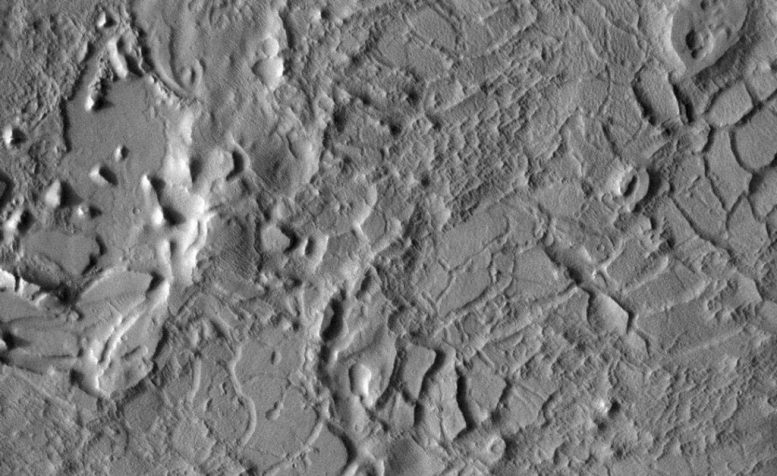
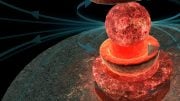

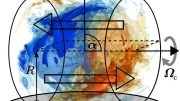

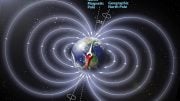
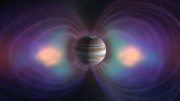

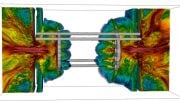
Soo, this proves life came from mars to earth, right??
Interesting idea, but likely not – even disregarding the survivability problems of interplanetary impact ejecta transits. Dated phylogenetic trees put life as likely evolving right after the Moon forming impactor [ https://www.ncbi.nlm.nih.gov/pmc/articles/PMC6152910/pdf/emss-78644.pdf ] and in oceanic alkaline hydrothermal vents [ https://www.nature.com/articles/nmicrobiol2016116 ].
Mars seems more like a partially dried scrap heap that never homogenized through [ https://www.sciencedaily.com/releases/2020/03/200330110336.htm ]. (The early magnetic field is a core geodynamo at a guess like ours, so no conflict between those observations.)
There are biochemists that like to put chemistry before biology despite the tree evidence above, and they want life evolving in surface pools. Which Earth likely didn’t have at the time (but a global ocean, with possibly only 3 % land 3 billion years ago [ https://www.theguardian.com/science/2020/mar/02/earth-may-have-been-a-water-world-3bn-years-ago-scientists-find ; but see also potentially conflicting evidence here: https://edition.cnn.com/2020/04/22/world/earth-plate-tectonics-timeline-scn/index.html ]. So this minor group heart Mars, biologists and geologists heart Earth.
These biochemists may also still point to the until recently dominating idea of a late Jupiter/Saturn migration. But it is now believed Earth pebble accreted within 5 Myrs so the Moon forming collision was a “do over” after which it was mostly smooth sailing [ https://www.sciencemag.org/news/2020/01/cataclysmic-bashing-giant-planets-occurred-early-our-solar-systems-history ]. “The hunt is on for more observations that can parse what happened during those first 100 million years, whether from asteroid samples, clusters of primordial asteroid families, or craters on the Moon and Mars. “Now, the question is, was it [that planets must have migrated to create the modern Solar System] a few million years after [initial system formation] or 80 million years?” Morbidelli says. “Honestly we don’t know.”” (Latest research imply it may have a few million years after [ https://phys.org/news/2020-04-simultaneous-simulation-gravitation-magnetism-protoplanetary.html ], so before the Moon forming collision. The impactor may have been a late after effect of the gas giant migration.)
But in general, since life evolved early it was likely an easy process. Even if it happened independently on some planets and ice moons (Enceladus) the simplest theory is that it is locally evolved.
Or, for a better explanation of planetary magnetic fields that clarifies the “groundbreaking recent discoveries which completely confound conventional models of planetary magnetic fields. “:
https://www.thunderbolts.info/wp/2019/02/16/donald-scott-why-do-planets-have-magnetic-fields-space-news/